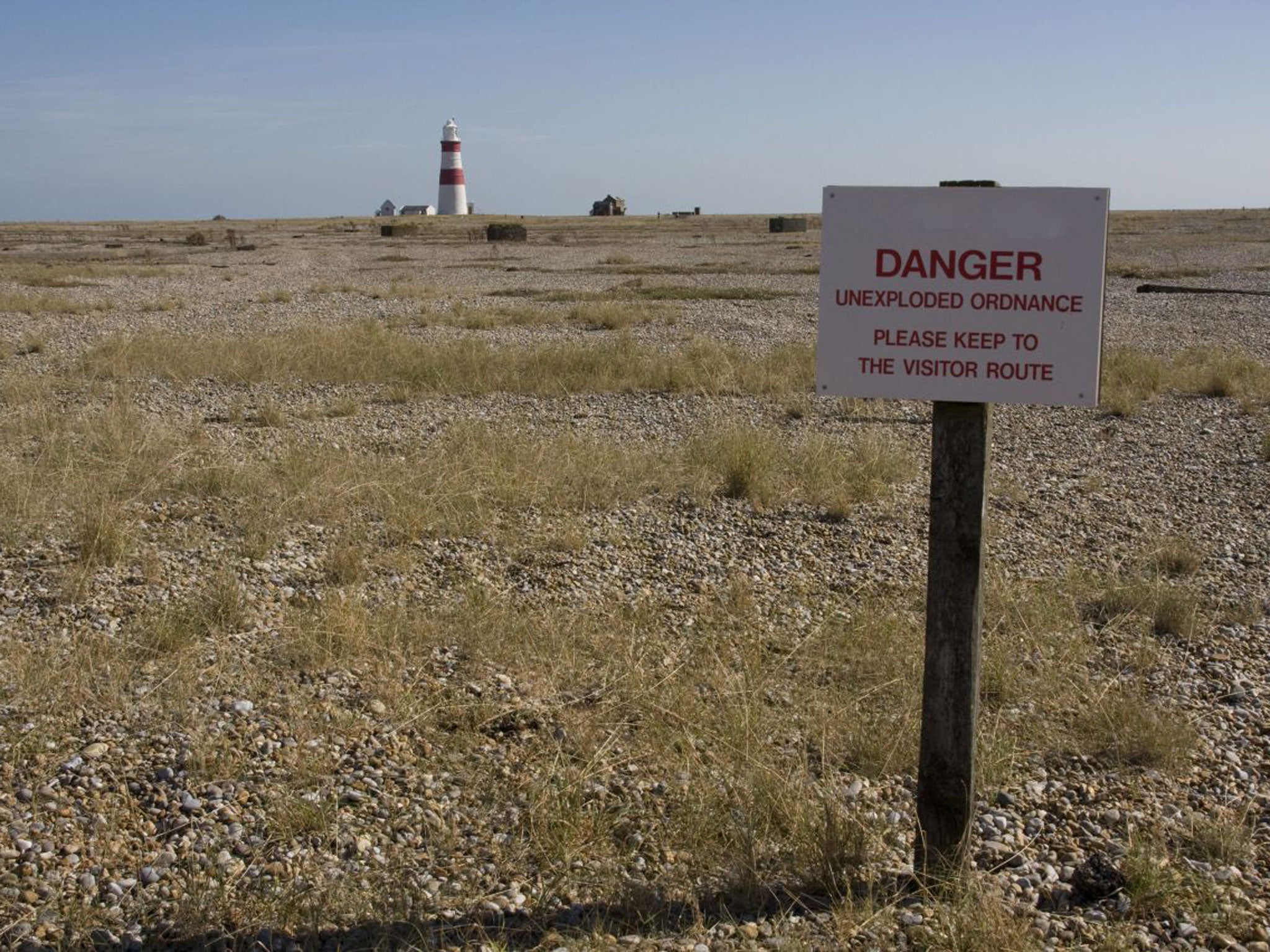Nature Studies: The nature reserve with an atom bomb in it
Orford Ness, a promontory of vegetated shingle in Suffolk, is the nearest thing in Britain to Arizona, but it is richer environmentally than it looks

Orford Ness in Suffolk is one of the strangest places in Britain. It certainly looks strange, right from the off. It is a vegetated shingle spit, the largest in Europe: that is, a promontory of shingle, separated from the coastline by a channel (Dungeness in Kent is very similar, and twice as big, but it is not a spit as it is no longer cut off from the coast).
Vegetated shingle appears a dry, bleak and desolate habitat, almost a cactus landscape – the nearest thing in Britain to Arizona, someone once said to me – but it is richer environmentally than it looks, harbouring specialised communities of plants, lichens and insects, as well as attractive birds.
Orford Ness itself has something else which makes it intriguing – the remnants of its past as a secret military base. An isolated part of the coast, it was deemed ideal for weapons research from the First World War onwards; in the 1930s and 1940s it was an experimental station for bombs and bombers; and then from the 1950s onwards it performed the same function, even more secretly, for Britain’s nuclear weapons.
This desolate stretch of land was where the weapons casings were tested to destruction: blown up in curious buildings designed to contain the blast, known as “pagodas’. They’re still there, slowly crumbling, as the National Trust, which took over the place from the Ministry of Defence in the 1990s, has a policy of benign neglect – letting nature slowly reclaim all the old Cold War military infrastructure, rather than neatly removing it. And I approve of that.
But when I went to Orford, now a nature reserve, earlier this week, it wasn’t for military history. I went birding with three chums, hoping to intercept the streams of migrants which flow south down the East Anglian coastline in September on their way to Africa, and include some special birds from Scandinavia, such as wrynecks, those weird small woodpeckers.
Alas, the wind was in the wrong direction – you need easterlies – so great flocks of migrants were missing, but the compensation was wonderful sunshine, and we were happy enough with the landscape, and the company, and the few things we did see such as whinchats and wheatears and yellow wagtails and clouds of swallows and a spoonbill or two. Then I walked into the museum.
It’s an old anodyne MoD shack in the middle of the landscape simply labelled “Information Building”, and it holds a photographic exhibition of the place as a military base. I wandered through the rooms, looking at the pictures of long-forgotten experiments, then I got to the last room and was brought up short. It took a moment to register what I was looking at; it took a couple more moments for the disbelief to dissipate.
It was an atom bomb. It was a real atom bomb, a WE177 to be precise, the standard air-dropped British nuclear weapon for the RAF between the 1960s and the 1990s. Disarmed, of course. But there it was, finned, painted white, serial number QV0679, about 11ft (3.5m) long on its trailer, and I was overwhelmed with the thought: this thing could destroy a city. Had the Cold War ever gone hot, this could have taken out Minsk.
My generation lived through the years of nuclear terror, culminating in the Cuba crisis of 1962 when the end of everything really did seem imminent; now all that is thankfully forgotten and anyone under 30 has no notion of it. But here was the reality of it, once again. So much death in such a small container. How many people could it vaporise in an instant? A hundred thousand? Two hundred thousand? And look, you could get it in the back of a Volvo estate, if you put the seats down.
I went back out into the sunshine. Jeremy shouted: “Spotted flycatcher over here.” I couldn’t focus on it. My head was swimming.
It still is.
Twitter: @mjpmccarthy
Subscribe to Independent Premium to bookmark this article
Want to bookmark your favourite articles and stories to read or reference later? Start your Independent Premium subscription today.

Join our commenting forum
Join thought-provoking conversations, follow other Independent readers and see their replies